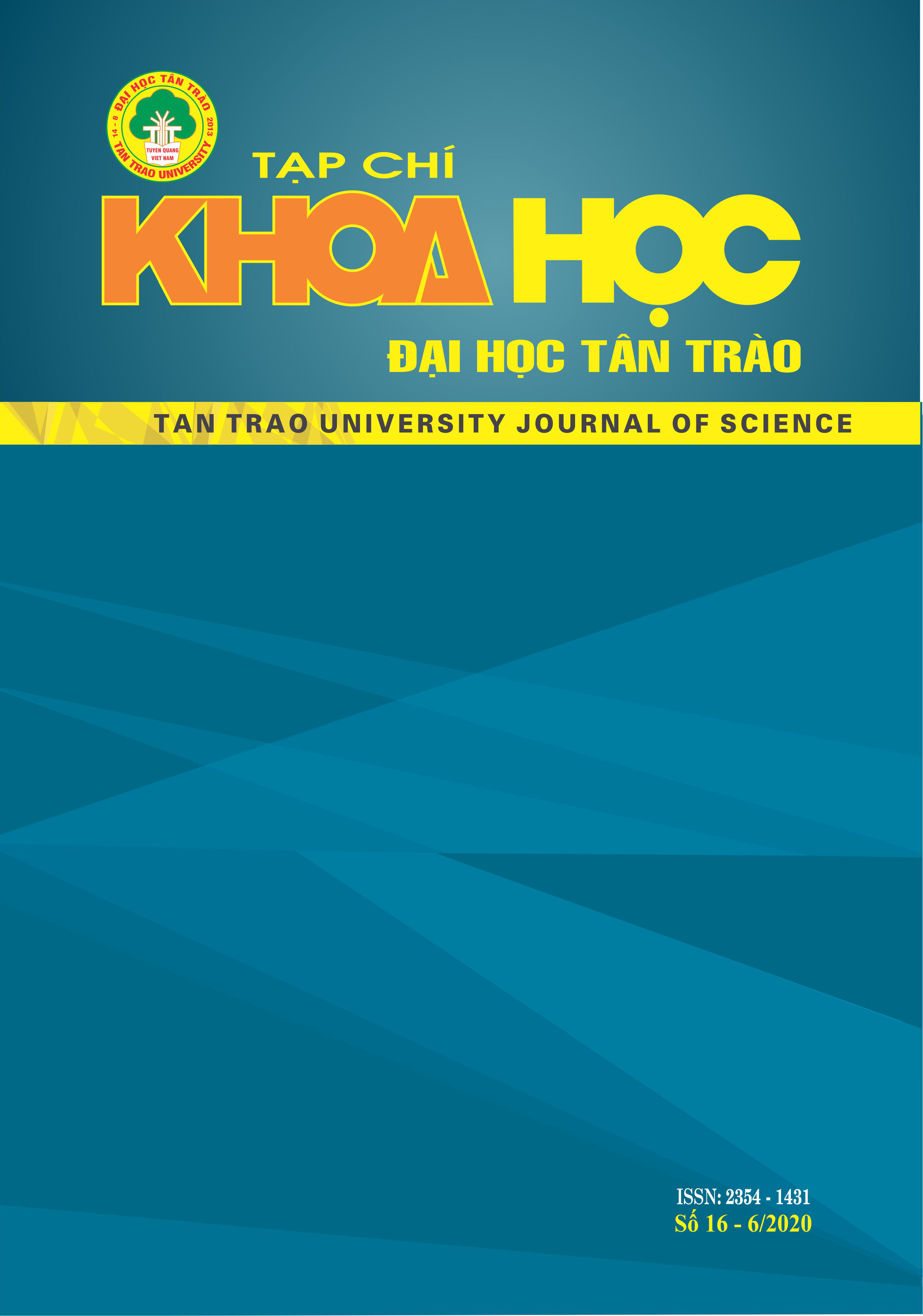KHAI THÁC CÁC TÍNH CHẤT SỐ HỌC LIÊN QUAN ĐẾN BÀI TOÁN VỀ DÃY SỐ TRONG CÁC KÌ THI OLYMPIC SINH VIÊN
DOI:
https://doi.org/10.51453/2354-1431/2020/333Từ khóa:
Dãy số, giá»›i hạn, số há»c, số chÃnh phÆ°Æ¡ng, sinh viên.Tóm tắt
Dãy số là một trong những chủ đề nằm trong chương trình giải tích của chương trình Đại học Sư phạm Toán, là một chuyên đề cơ bản trong nội dung dạy học cho các đội tuyển Olympic dành cho sinh viên toán các trường Đại học và Cao đẳng. Bài toán về dãy số giúp sinh viên hiểu sâu sắc hơn về hàm số, về qui luật phân bố các số, về tính chất các vô cùng bé, vô cùng lớn... Bài viết này, tác giả tổng hợp một số bài toán liên quan đến dãy số nhằm phát triển năng lực học tập và nghiên cứu của sinh viên.
Tải xuống
Tài liệu tham khảo
1. Phan Huy Khải, Các chuyên đề số học bồi dưỡng học sinh giỏi Toán - Chuyên đề Số học và dãy số, Nxb Giáo dục, 2016 (tái bản).
2. Bộ Giáo dục và Đào tạo - Hội Toán học Việt Nam, Tuyển tập 30 năm Tạp chí Toán học và Tuổi trẻ, Nxb Giáo dục, 2013 (tái bản).
3. Nguyễn Xuân Liêm (1997), Giải tích tập 1, Nhà xuất bản Giáo dục, Hà Nội.
4. Trần Đức Long - Nguyễn Đình Sang - Nguyễn Viết Triều Tiên - Hoàng Quốc Toàn (2008), Bài tập giải tích tập I, Nhà xuất bản ĐHQG Hà Nội, Hà Nội.
5. Trần Đức Long - Nguyễn Đình Sang - Hoàng Quốc Toàn (2009), Bài tập giải tích tập II, Nhà xuất bản ĐHQG Hà Nội, Hà Nội.
6. Nguyễn Đình Trí (chủ biên) - Tạ Văn Đĩnh - Nguyễn Hồ Quỳnh (2001), Bài tập toán cao cấp tập hai, Nhà xuất bản Giáo dục, Hà Nội.
7. W.J.Kaczkor - M.T.Nowak (Người dịch: Đoàn Chi), Bài tập Giải tích 1, Nxb Đại học Sư phạm, 2003.
Tải xuống
Đã Xuất bản
Cách trích dẫn
Số
Chuyên mục
Giấy phép

Tác phẩm này được cấp phép theo Giấy phép Quốc tế Creative Commons Attribution-ShareAlike 4.0 .
Bài báo được xuất bản ở Tạp chí Khoa học Đại học Tân Trào được cấp phép theo giấy phép Ghi công - Chia sẻ tương tự 4.0 Quốc tế (CC BY-SA). Theo đó, các tác giả khác có thể sao chép, chuyển đổi hay phân phối lại các bài báo này với mục đích hợp pháp trên mọi phương tiện, với điều kiện họ trích dẫn tác giả, Tạp chí Khoa học Đại học Tân Trào và đường link đến bản quyền; nêu rõ các thay đổi đã thực hiện và các nghiên cứu đăng lại được tiến hành theo cùng một bản quyền.
Bản quyền bài báo thuộc về các tác giả, không hạn chế số lượng. Tạp chí Khoa học Tân Trào được cấp giấy phép không độc quyền để xuất bản bài báo với tư cách nhà xuất bản nguồn, kèm theo quyền thương mại để in các bài báo cung cấp cho các thư viện và cá nhân.
Mặc dù các điều khoản của giấy phép CC BY-SA không dành cho các tác giả (với tư cách là người giữ bản quyền của bài báo, họ không bị hạn chế về quyền hạn), khi gửi bài tới Tạp chí Khoa học Đại học Tân Trào, tác giả cần đáp ứng quyền của độc giả, và cần cấp quyền cho bên thứ 3 sử dụng bài báo của họ trong phạm vi của giấy phép.






